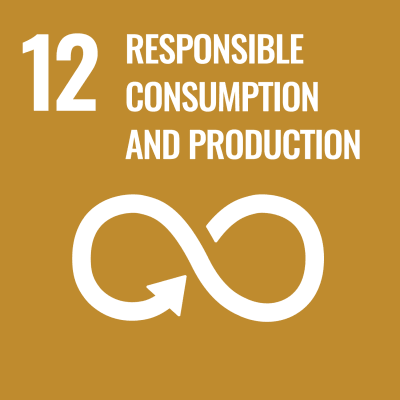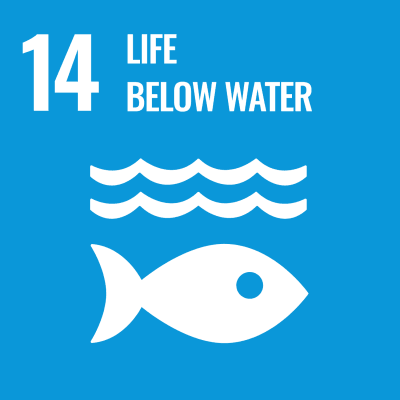-
Faculty of Science, Department of Applied Science
- Professor
- Hideyuki HIGASHIMURA
- Research Field
Organic Chemistry, Polymer, Catalysis
- Keyword(s)
Aromatic Polymer, Redox Catalysis
- Research theme
-
- Development of new materials useful for society
- (1) Electric materials for the next 6G system
- (2) Production of green hydrogen
- (3) Secondary battery with ultra-high capacity
Outline of research activities



(1) Electric materials for the next 6G system
We have synthesized a new polymer with the lowest dielectric constant in all-aromatic hydrocarbon-type polymers, and are developing it for electric materials of the next 6G system.(2) Production of green hydrogen
The catalysts and materials for production of green hydrogen are studied such as artificial photosynthesis and electrolysis of water by renewable energy.(3) Secondary battery with ultra-high capacity
The new cathode materials with ultra-high capacity in lithium ion battery are developped to increase driving distances for EV.
- Desired cooperation
-
- Low dielectric insulator, Secondary battery cathode,
- Energy-related catalysts
- (Possible to collaborate on organic material research)
-
Faculty of Science, Department of Physics
- Associate professor
- Kazuaki MATANO
- Research Field
Condensed Matter Physics, Intelligent Informatics
- Keyword(s)
Superconductivity, New Materials, Artificial Intelligence, Generative AI
- Research theme
-
- Physical Property Research on Superconductors
- Development of New Materials
- Development of Generative AI
Outline of research activities


Our laboratory explores new materials using AI as a core research theme. Materials are made from combinations of elements in the periodic table, and the number of possible combinations is nearly infinite—many useful materials remain undiscovered. Some of these may include superconductors, solar cells, thermoelectric materials, or quantum devices.
Superconductors, for example, have zero electrical resistance and could enable lossless power transmission and highly efficient energy devices. However, known superconductors only work at very low temperatures. Discovering room-temperature superconductors remains a major scientific challenge.
Traditionally, material discovery has relied on researchers’ knowledge and intuition. Today, AI technologies such as generative AI and machine learning can analyze large datasets of material properties and predict those of unknown compounds. This data-driven approach aligns well with modern physics, especially statistical and quantum mechanics.
In our lab, we build AI models trained on material databases to predict which chemical compositions or structures may have desirable properties. Promising candidates are synthesized and evaluated through experiments such as X-ray diffraction and resistivity measurements. Feedback from these experiments is used to improve the AI models.- Desired cooperation
-
- Research on Superconducting Materials
- Development of Generative AI
- Physics Education
-
Faculty of Science, Department of Physics
- Lecturer
- Tetsuro KUBO
- Research Field
Condensed matter physics, Magnetism, Strongly-correlated electron systems, Toporogical materials
- Keyword(s)
Nuclear magnetic resonance (NMR) spectroscopy, f-electron systems, Weyl semimetals
- Research theme
-
- NMR study of strongly-correlated electron systems and toporogical materials
Outline of research activities


Our research interests span various quantum phenomena such as magnetism, superconductivity, and multipolar ordering in strongly-correlated electron systems, as well as Weyl fermion excitations in what are known as topological Weyl semimetals. The nuclear magnetic resonance (NMR) techniques we use are advantageous because they allow us to investigate microscopic electronic states on the laboratory scale.
We also have a keen interest in developing a mobile and easily reproducible NMR spectrometer by leveraging the latest radio frequency technologies.

- Desired cooperation
-
- Research in condensed matter physics using NMR techniques
- Development of mobile NMR spectrometers
-
Faculty of Science, Department of Chemistry
- Professor
- Makoto SAKAI
- Research Field
Laser spectroscopy, Molecular spectroscopy, Microscopy
- Keyword(s)
IR super-resolution, Picosecond laser
- Research theme
-
- IR super-resolution microscopy for biological samples
- IR super-resolution molecular imaging
- Molecular orientation imaging
- Chirality mapping
Outline of research activities

Microscopes are very important tools for studying biological samples. However, most of the microscopes cannot measure the vibrational molecular imaging based on molecular information. At the moment, only two microscopes are measureable. One is the Raman microscope, and the other is IR microscope, those are complementary relations. But these are not perfect. Especially, the IR microscope has very low spatial resolution about 10 µm, because of the diffraction limit by the IR wavelength. This is a serious problem for a microscope. To solve this problem, we have developed IR super-resolution microscope with a sub-micrometer spatial resolution by using vibrational sum-frequency generation (VSFG) detection, and have reported the applications to various biological samples such as human hair, avian feather, living cells and so on. By using this microscope, we can observe not only the vibrational molecular image with high spatial resolution but also the molecular orientation and chirality images.

- Desired cooperation
-
- Functional inorganic/organic materials
- Biological molecules such as protein, sugar, lipid, cell etc.
-
Faculty of Science, Department of Chemistry
- Professor
- Masanori YAMADA
- Research Field
Biopolymer
- Keyword(s)
DNA, Environmental material, Enegry material. Bioplastic
- Research theme
-
- Removal of harmful compounds by DNA
- Preparation of environmental material consisting of biopolymer
- Utilization of biopolymer as anhydrous proton conductors
- Preparation of bioplastics consisting of sustainable materials
Outline of research activities





Salmon milt, defatted soybeans, crab and shrimp shells, and cowhide have been discarded as an industrial waste around the world. Therefore, DNA, soy protein, chitin/chitosan, and collagen, which are obtained from these materials, are sustainable resources. Our research using sustainable resources is as follows; 1) removal of harmful organic compounds; 2) selective accumulation of metal ion; 3) development of anhydrous proton conducting material; and 4) development of bioplastic with the biodegradable property.

- Desired cooperation
-
- Development of environmental material
- Development of anhydrous proton conducting material using biopolymer
-
Faculty of Science, Department of Chemistry
- Professor
- Minoru MITSUMI
- Research Field
Coordination chemistry, Solid-state chemistry
- Keyword(s)
Visible light-driven redox catalysis, Photocatalytic H2 production, Photocatalytic CO2 reduction, Porous coordination polymers, Porphyrin chemistry, Mixed-valence complexes, Magnetic, dielectric and conductive materials
- Research theme
-
- Visible-light-driven redox catalysts for photocatalytic H2 production and CO2 reduction
- Multi-functional materials based on coordination polymers with redox-active bridging ligands
- One-dimensional d-electronic metals based on partially oxidized one-dimensional dinuclear platinum complexes
Outline of research activities


Metal complexes can exhibit functions and physical properties not achieved by organic or inorganic compounds alone by appropriately selecting the central metal ion and designing the organic π-electron ligands surrounding it. The characteristics of these complexes enable effective sunlight harvesting and various catalytic reactions utilizing its energy. In our laboratory, we are developing visible light-driven redox catalysts for photocatalytic H2 production and CO2 reduction using metal-porphyrin complexes, which can harvest visible light and catalyze various reactions. In research on functions and physical properties, we are developing coordination polymers with unique magnetic and dielectric properties based on mixed-valence states using redox-active ligands. Furthermore, we are developing one-dimensional d-electroninc metals based on partially oxidized one-dimensional dinuclear platinum complexes that exhibit stable metallic states at low temperatures.
- Desired cooperation
-
- Visible light-driven redox catalysis based on metal complexes for photocatalytic H2 production and CO2 reduction
- Metal complexes in general
-
Faculty of Science, Department of Chemistry
- Professor
- Tetsuo IWANAGA
- Research Field
Physical Organic Chemistry
- Keyword(s)
Organic Synthesis, Organic Fucntional Materials
- Research theme
-
- Synthesis and Properties of Novel pi-Electron Systems
- Synthesis of Donor/Acceptor Arrays Based on Aromatic Bisimides
- Development of Organic Photovoltaic Cell Materials
Outline of research activities


Developing efficient organic photovoltaic cell devices have been increasingly important in the growing needs for inexpensive renewable energy. The molecular designs for organic photovoltaic materials required delocalized pi-electron systems and utility elements. To develop novel pi-electron systems for organic photovoltaic materials, we synthesized some novel donor/acceptor arrays with aromatic bisimide units, and measured their properties and self-assembly abilities. Recently, we also synthesized some N-atom containing pi-electron systems and revealed their photophysical properties and structures.

- Desired cooperation
-
- Development of OPVC and OFET Materials.
- New Type of Organic Synthesis
-
Faculty of Science, Department of Chemistry
- Associate professor
- Kan WAKAMATSU
- Research Field
Organic Chemistry, Photochemistry, Computational Chemistry
- Keyword(s)
Functional Material, Photoreaction, Electron Transfer, Quantum Chemical Calculation
- Research theme
-
- Development of new photoreaction using photoinduced electron transfer and its application
- Quantum chemical investigation of physical properties and reactivities of functional organic molecules
Outline of research activities


Our research theme is development of new photoreaction using photoinduced electron transfer and its application to syntheses of functional materials. In present, we are working on (1) investigation of photochemical syntheses of indole derivatives which are considered to the important alkaloids widely found in nature, and (2) development of efficient photochemical synthetic methods for quinone imine dyes and their application. Because these target compounds indicate characteristic redox behavior, we also consider applying them to functional materials such as an OLED material while adopting their expected physical properties evaluated by quantum chemical calculation.

- Desired cooperation
-
- Development of organic compound which functionality can be induced by photoreaction
- Quantum chemical derivation of physical properties and reactivities of functional organic molecules
-
Faculty of Science, Department of Chemistry
- Associate professor
- Noboru OSAKA
- Research Field
Structure and dynamics of polymeric materials (solution, gel, elastomer, plastic)
- Keyword(s)
physical chemistry, hierarchical structure, various scattering methods
- Research theme
-
- Mechanical improvement and functional expression of polymeric materials by structure control
- Investigation on microscopic interaction between polymers and solvents
Outline of research activities



The kinds of polymers are relatively a few, which are used as plastics, rubber, and gels for daily life, since they exhibit versatile properties by hierarchical structure control ranging from nano- to micro-meter scales. In our laboratory, we focus to develop new polymeric materials by the hierarchical structure control and reveal the relationship between the mechanism and structure by microscope, scattering, and spectroscopy methods.

- Desired cooperation
-
- Development of new polymeric materials by structure control
- Investigation on relationship between structure and physical properties of polymer
-
Faculty of Science, Department of Chemistry
- Assistant professor
- Hirona TAKAHASHI
- Research Field
Laser spectroscopy, Time-resolved spectroscopy
- Keyword(s)
Photochemistry, Transient absorption spectroscopy
- Research theme
-
- Biomimetic microstructure formed by self-spreading behavior of phospholipid molecular assembly
Outline of research activities

Transient absorption spectroscopy measures the changes in the absorbance of short-lived species generated by photo-irradiation, and gives us the information about dynamic processes in materials or chemical compounds. Rate constants are also determined by measuring time-profiles of the concentration of excited molecules.
By using this method, we can investigate molecular dynamics after photo-irradiation.
- Desired cooperation
-
- Molecular dynamics after photo-irradiation for samples
-
Faculty of Engineering, Department of Mechanical Systems Engineering
- Professor
- Ichiro SHIMIZU
- Research Field
Solid Mechanics, Elasticity and Plasticity, Strength of Materials
- Keyword(s)
Engineering Solid Materials, Testing Methods of Materials and Products, Metal Forming, Biomedical Devices
- Research theme
-
- Elastic-plastic deformation of engineering materials
- Development of testing methods for materials and products
- Product design considering characteristics of materials
- Functional optimization of solid structures and its application to medical devices
Outline of research activities


Various industrial products are made of solid materials such as metals, polymers, and ceramics. Although all solid materials deform elastically and plastically when forces are applied, their deformation behavior strongly depends on deformation mechanisms. Therefore, it is indispensable to understand their deformation properties to produce useful machines and durable apparatuses. Our laboratory has been working on subjects that aim to apply solid materials for various engineering applications; clarification and evaluation of deformation properties of engineering materials, study on influences of microstructure upon deformation properties of solids, and development of new forming techniques.

- Desired cooperation
-
- Development of testing methods of engineering products
- Development of forming process of engineering materials and its evaluation
- Development of materials having specific deformation characteristics
- Design of solid structures and its application to products
-
Faculty of Engineering, Department of Mechanical Systems Engineering
- Professor
- Keiyu NAKAGAWA
- Research Field
Mechanical Material, Metal Engineering,Fatigue
- Keyword(s)
Soft magnetic amorphous alloy,Age hardening,Fatigue, Ultra-fine grain.
- Research theme
-
- Fabrication of soft magnetic amorphas alloys using liquid quenching method.
- Age hardening of ultra-fine grain aluminum alloys.
- Effect of trace elements on fatigue prpperties for aluminum alloy for air craft.
Outline of research activities

Examination of production conditions for soft magnetic amorphous ribbons by liquid rapidsolidification method using precipitation hardening Cu alloy rolls. In this paper, we investigated that production conditions for amorphous ribbons by liquid rapid solidification method.

- Desired cooperation
-
- High performance of soft magnetic amorphous alloys using liquid quenching method.
-
Faculty of Engineering, Department of Mechanical Systems Engineering
- Professor
- Kenji NAKAI
- Research Field
Safety design of composite structures
- Keyword(s)
Airplane, Composite material, High strain-rate characteristic
- Research theme
-
- Evaluation of high strain-rate mechanical properties of composite, metallic and polymeric materials
Outline of research activities


In recent years, composite and polymeric materials have been increasingly replacing conventional metallic materials in aerospace, civil, marine, rail and automotive industries. Some applications of composite and polymeric materials involve dynamically loaded components and structures. Therefore, there is a need to fully understand the dynamic behavior of composite materials for the analysis and design of composite and polymeric structures subjected to impact loadings. However, the mechanical properties of composite and polymeric materials under dynamic loading conditions are not well understood, because there are no standard impact test techniques.
Consequently, we experimentally and numerically examine the effects of strain rate on the compressive and tensile characteristics of composite and polymeric materials. High strain-rate stress-strain curves are obtained on the standard or modified split Hopkinson pressure bar (SHPB). Low and intermediate strain-rate ones are measured in an Instron testing machine.
- Desired cooperation
-
- Determination of high strain-rate stress-strain curves of composite, metallic and polymeric materials used in aerospace, automotive and rail industries
-
Faculty of Engineering, Department of Mechanical Systems Engineering
- Professor
- Masanori SEKI
- Research Field
Machine Design, Tribology
- Keyword(s)
Rolling Fatigue, Tribology, Machine Element, Peening
- Research theme
-
- Improvement in rolling contact fatigue life due to materials and surface treatments
- Influence of lubricant on rolling contact fatigue
- Application of cavitation peening
- Performance evaluation of plastic gears
Outline of research activities

Machine elements such as screws, gears, bearings, shafts, and springs are components needed for mechanisms. The performance improvement of machine elements is essential for that of the mechanical device. Therefore, in the machine design laboratory, we work toward the high performance and high strength of machine elements in terms of materials, machining, and surface treatments. Specifically, we are working on the performance evaluation of plastic gears using gear testing machines, the rolling contact fatigue life evaluation of bearings with a ball-on-disk contact tester, the sliding characteristic evaluation of steel using a high temperature tribometer.

- Desired cooperation
-
- Evaluation of rolling contact fatigue life of steel
- Evaluation of sliding characteristic of steel
- Performance evaluation of plastic gears
-
Faculty of Engineering, Department of Mechanical Systems Engineering
- Associate professor
- Akihiro TAKEMURA
- Research Field
Plastic Deformation, Metal crystal Structure, Corrosion Proof
- Keyword(s)
Metal material, Material Property, Maching Process, Productivity
- Research theme
-
- Influence of maching on chemical property of material
- Influence of heat treatment on heat-transfer performance of material
- Reserch of metal maching performance
Outline of research activities




In the case of metal materials are machined, the surface of materials are plastic defomed. Cristal structure of metal surface is strained by plastic deformation. The crystal structure strain changes the chemical property of surface. This phenomenon is called a mechano-chemical reaction. We study the mechano-chemical reaction and the relationship of machining process and material property.

- Desired cooperation
-
- Improving the machinability of metal materials
- Anticorrosion engineering of metal surface treatment and processing
- Improvement of metallic materials productivity
-
Faculty of Engineering, Department of Mechanical Systems Engineering
- Associate professor
- Motoki TERANO
- Research Field
Manufacturing processing
- Keyword(s)
Metal Forming,Microsturucture control, Micro/nano forming, Tribology
- Research theme
-
- Development of local microsturucture control method
- Precision metal forming using CAE analysis
- Development of efficient fabrication method of functional surface by nano forming
Outline of research activities



The mechanical and electro-magnetic characteristics of metals are dependent on microstructures such as crystal orientation and grain diameter. In recent years, comprehensive studies have been carried out on thermo-mechanical control processing to improve physical properties of metallic materials without adding rare elements in order to save energy and resources. For example, high performance metals, such as ultrafine grain steel and magnetic steel, are developed by a combination of rolling and heat treatment. These metals exhibit uniform characteristics. However, it is more efficient if suitable characteristics can be generated at required positions. In our research, a new technology to control only material surface microstructure is being studied.

- Desired cooperation
-
- Local microsturucture control
- CAE analysis for metal forming
- Fabrication of functional surface by nano forming
-
Faculty of Engineering, Department of Applied Chemistry
- Professor
- Akihiro ORITA
- Research Field
Organic Chemistry, Organometallic Chemistry, Organic Materials
- Keyword(s)
Organic Synthesis, Acetylenes, Fluorescence, Solar Cells, Sulfones, Organostannanes
- Research theme
-
- Syntheses of novel expanded π-systems
- Syntheses of organic fluorescent and semi-conducting materials
- Syntheses of organic dyes for solar cells
- Syntheses of environmentally benign organotin catalysts and organic photocatalysts and their applications to organic syntheses
Outline of research activities


1. Organic light-emitting materials for OLEDs or dyes for OPVs are developed.

2. Novel antiaromatic compounds such as Sondheimer-Wong diynes and diarenopentalenes are developed as new types of organic materials.
3. Organic syntheses using organotin cluster as catalysts are developed.
- Desired cooperation
-
- Organic synthesis
- Organic materials
-
Faculty of Engineering, Department of Architecture
- Professor
- Hiroyuki HOTTA
- Research Field
Foundation Engineering, Geotechnical Engineering, Disaster Engineering
- Keyword(s)
Foundation, Ground, Performance Evaluation, Disaster Survey
- Research theme
-
- Deformation of ground and structures during construction and usage of buildings
- Performance evaluation and reuse of existing piles
- Disaster survey and analysis of buildings and foundations
Outline of research activities



In order to ensure safety during construction and to assure quality and performance of buildings, I am conducting research on methods to predict and to evaluate deformation of ground and structures accurately.
Also, to reduce cost, period, and environmental load of re-building, I am researching survey or evaluation methods of existing piles and foundation design reusing them.
In case of disasters such as earthquakes or heavy rains, I quickly survey on site, analyse the cause of damage, and utilise the results for subsequent disaster prevention and mitigation.
- Desired cooperation
-
- Rationalisation of foundation design and underground construction
- Disaster survey and diagnosis, restoration and reconstruction plan
- Research on optimization methods in the life cycle of buildings
-
Faculty of Engineering, Department of Architecture
- Professor
- Keiji NAKANISHI
- Research Field
Eathquake-Resistant Structure, Antiseismic Reinforcement
- Keyword(s)
Reinforced concrete,Steel structure,Steel-reinforced concrete,Base isolation structure,Seismic control design, Antiseismic reinforcement,Optimum design
- Research theme
-
- Tublar truss structure in steel
- Wooden grid wall
- Base isolation and seismic control design
Outline of research activities



My spetial field of study is earthquake resistant structure. The way of my study is at first understanding of destruction mode and strength of structure by experiment , and next establishing design method by simulating the experimental results by analysis.
In 2015 I took up my new post of professor of Okayama University of Science, I was beginning of study of Tublar truss structure in steel with locally company. And in 2016 I was beginning study of Base isolation structure and Seismic controle structure by using the small vibration table.
I am planning to study of new structure of minimizing damage under large eathquake expected in the near future.
- Desired cooperation
-
- Experimental study of Reinfoced concrete,Steel structure.
- Experimental study of Base isolation structure.
- Analytical study of Optimum design.
-
Faculty of Engineering, Department of Architecture
- Associate professor
- Daiu MABUCHI
- Research Field
Architectural Planning, Architectural Design Methodology, Architectural Design
- Keyword(s)
Virtual Reality, Measurement by Psychology and Physiology, Subject Experiment
- Research theme
-
- Exploring techniques for creators and users to co-create
- Method Development to reflect users' viewpoints to creation based on their stress index
- Exploring a design methodology using virtual reality and algorithm design
Outline of research activities


The way of manufacturing is undergoing major changes. One of the changes is co-creation. Development of a new manufacturing method beyond the gap between the creator and the user is a big challenge.
In my laboratory, I am studying a method to eliminate the barriers between creators and users as much as possible using Stress Index, Virtual Reality and so on. And we aim to construct a place where co-creation is possible.

- Desired cooperation
-
- Practice of manufacturing using stress index and VR
- Joint development of interior and exterior design
- The architectural design of small scale building








